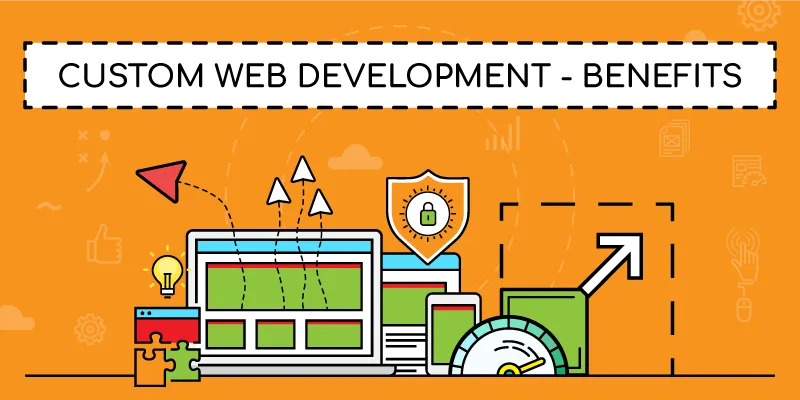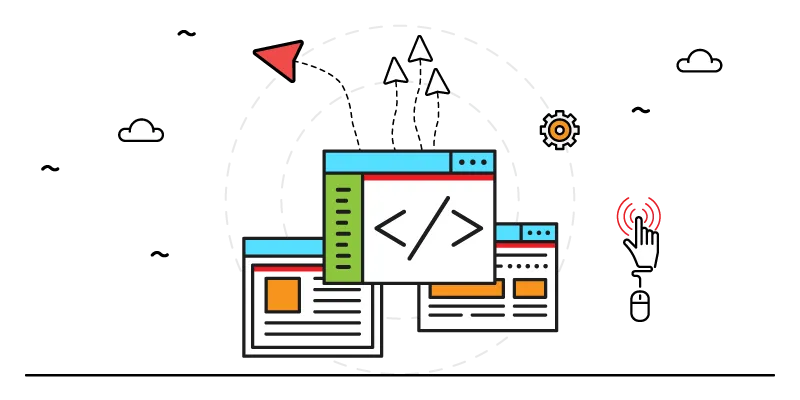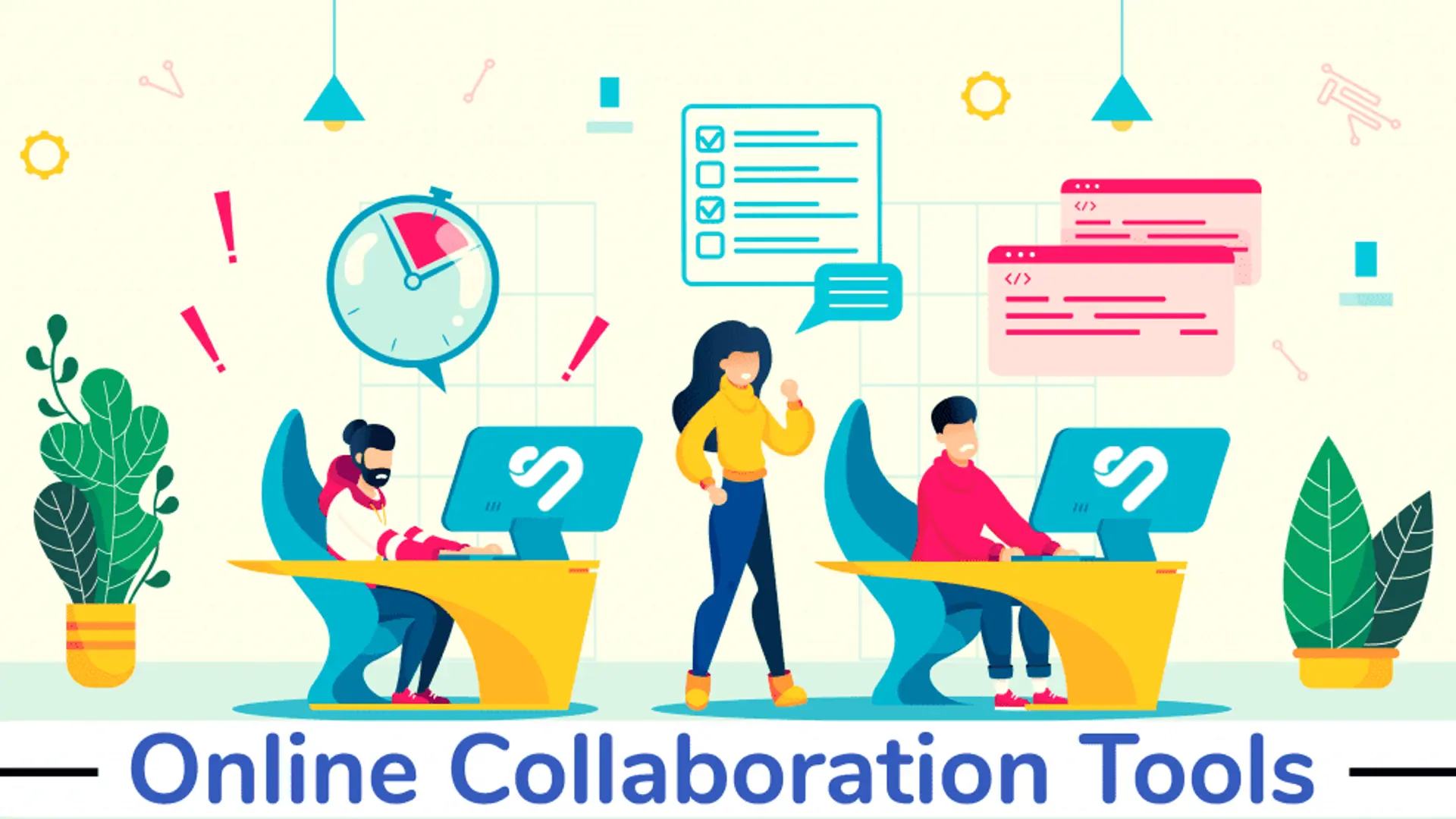

Top 5 pros and cons of a custom web application
Before embarking on the custom web application development company, it is prudent to weigh the pros and cons. The priorities of each project are different and although it may be advantageous to embark on the web application development for one project does not necessarily mean that it is advantageous for another.
This article will show you 5 advantages and 5 disadvantages of tailor-made web application solutions so that you can make a decision more easily.
Advantages of a custom web application

Features :
When the question arises of using an existing solution or developing a custom web application, the first thing to think about is functionality. An existing application may not be suitable for your processes. And trying to adapt an existing solution to your needs is bound to be a disaster. So you have to change your own processes to successfully use it. But it is not always possible.
In this case it makes sense to choose to develop a web application. This will allow what other tools will not allow. You will have the possibility of implementing the functionalities that your users need to be perfectly adapted to the processes in place in the company.
Stay competitive:
In addition, you must take into account its competitors. If everyone uses the same tools to perform the same tasks, it will be difficult to differentiate and this will lead to a loss of competitiveness.
If your project is essential for your business to remain competitive, a custom web app development will keep this competitiveness and even improve it. If on the contrary, the project you are working on is not a project that is vital to your competitiveness, using an existing solution is recommended.
Innovation:
Competitiveness also requires innovation. Competition is fierce in all areas and only innovation can keep you competitive. If nothing changes, your business will slowly but surely die.
Being on the lookout for new tools available is an option to stay competitive. If your competitors are slow to adopt new tools, you can quickly gain competitiveness by adapting existing solutions that have just come out. It is a risk because it can also backfire if you make the wrong choice and it is also temporary. If it's a good app, everyone will quickly adopt it.
To stay innovative, it is therefore recommended to have tailor-made web applications, to maintain them and to make them evolve in order to always be a step ahead of the competition.
Integrations:
Existing solutions will rarely be able to have integrations with all the applications you use and even more rarely with progressive web applications or other custom systems already in place in your business. It is often difficult if not impossible to use efficiently, and therefore to be productive, without these integrations.
With a tailor-made web application, you have all the freedom to make the integrations necessary for good user efficiency and essential for the proper functioning of your business and the development of your project.
User experience:

SaaS tools often have a good user experience but their accessibility is not necessarily perfect. For example, all websites and applications used in the public sector, whether in the US or in Europe, must be accessible.
However, many existing solutions do not meet all of the accessibility requirements. A much-answered problem comes from the contrast of colors.
If the color of the text does not contrast strongly enough with the color of its background, this can create readability problems not only with people who have vision problems but also with all users whose screen their computer does not render colors correctly which will impact their contrast.
These are far more common cases than one can imagine and therefore one must pay attention to them. If this is a problem for your project, a progressive web application development, therefore, becomes the only solution.
Disadvantages
Time limit:
With an existing solution, no design or development is required to implement it. Only change management should be carried out. So you can transition quickly. This is not the case with a custom web application.
- We will first have to recruit developers or find an agency. It may already take several months.
- Then it will be necessary to establish specifications and define priorities before starting development. Quality work here will take several more weeks.
- The development will be carried out and it can take a month to several years depending on demand.
- Once the web application is finished, the change management will remain, as for an existing application.
If the project you are working on has a short term deadline, over-measurement is probably not the right solution. If it is a long-term project, then you can consider the possibility of developing a web application.
Often difficult estimation:
In addition to the time that a custom web application can take, there is the difficulty of being able to estimate with precision all the work that is going to take place. It is impossible to think of everything down to the last detail before development even begins. The estimate you are going to make or that the agency you are going to work with will not be exact. In very rare cases, development may take less time than initially planned. But in most cases, it will take longer.
There are always technical challenges and even if we can anticipate them during the estimation, it will never be exact. To remedy this, it is necessary to take the time when estimating each functionality to get to the bottom of things on the functional and technical side. Quality work on this aspect will reduce uncertainty.
User Experience:
While this is an advantage of tailor-made web applications, the user experience can also become a disadvantage. Indeed, this requires expertise that you will not necessarily find internally or in an agency.
The situation where you want a tailor-made web application to have an experience adapted to its users and where you end up with an average quality is quite common. We must, therefore, be careful on this point and be sure that if it is an important criterion in the choice of tailor-made, finding competent people on this subject will be essential.
Security:
As with the user experience, you need to surround yourself with the right people when it comes to the security of a custom web app solution.
In general, with an existing solution, security is solid and faults are corrected quickly. So you need the same level of security for your application. You cannot have to fail security on the pain of being affected extremely negatively if a fault is one day exploited.
Resources:
User experience and security issues ultimately come from a lack of resources. An existing solution will have a larger team than yours or any agency, as they only handle one web application for multiple clients. It will be very difficult to achieve quality as well as theirs.
Companies like Salesforce.com or SAP have thousands of developers and designers. Making a custom ERP is a gargantuan project in itself. But alongside other ERPs with resources considerably greater than yours, it will be almost impossible to stand out.
It is only if you bring real added value that is very specific to your business that tailoring is possible, as mentioned above.
Conclusion:
As we have seen through these advantages and disadvantages, the design of a tailor-made web application will really depend on each project.
- Is the project deadline too short to calmly consider quality development?
- Do the users of the application have specific needs, be it in terms of process, integrations or graphical interface?
- How important is the project in the competitiveness and innovation of the company?
- Does the project have security obligations that are not compatible with existing solutions?
It is by answering these questions that you will be able to make the decision to over-measure or use a ready-to-use application.






